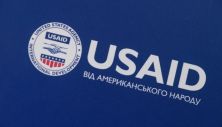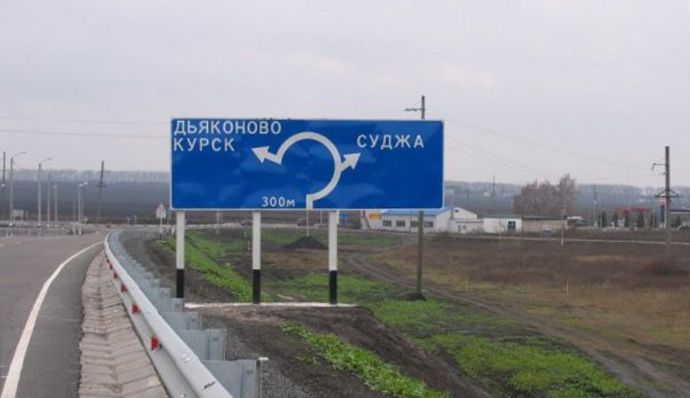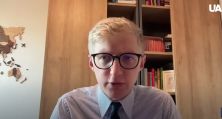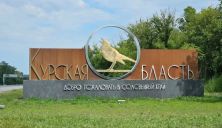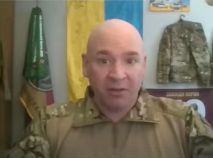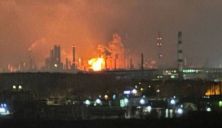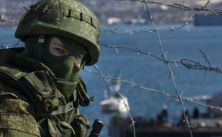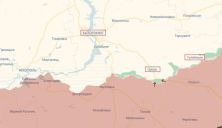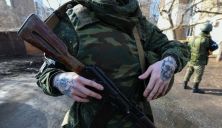The Kursk operation of the Armed Forces of Ukraine (AFU) has been ongoing for six months. According to President Volodymyr Zelenskyy, Ukrainian troops will maintain control over enemy territories for as long as necessary to implement the victory plan.
Notably, the new counteroffensive of Ukraine’s Defense Forces in the Kursk region, like the previous successful counteroffensive, is deliberately conducted in an atmosphere of informational silence. The world learns about the successes of Ukrainian troops only post-factum.
Let me remind you that during the first counteroffensive, under absolute informational silence, the Defense Forces of Ukraine took control of approximately 1,200 sq. km of the Kursk region. The minimal amount of information from the Kursk region about the advance of the Defense Forces allowed the General Staff of the AFU to implement its plans.
At that time, the Main Intelligence Directorate (HUR) obtained data on the formation of the operational-tactical group “Sudzha” in the Kursk region. The enemy planned an invasion of the Sumy region, aiming to replicate the Kharkiv scenario. The danger of the Russian plan lay in the fact that Sumy is located just 30 kilometers from the Russian border.
Based on intelligence data from HUR of the Ministry of Defense of Ukraine, a decision was made to conduct the Kursk operation. Troops were redeployed under the guise of preparing for defense against a Russian offensive, but in reality, they were meant to break through. This prevented the expansion of the front line in the Sumy region by shifting combat operations onto Russian territory.
The Kursk operation was a preemptive strike, which thwarted the occupiers’ attempt to repeat their success in the Kharkiv offensive scenario.
With the latest advancements in the Kursk region, the Ukrainian army has once again demonstrated its ability to conduct successful counteroffensives—even on Russian territory. Therefore, there is no talk of any pause or, even more so, a negative development of events for the Ukrainian side in the Kursk region.
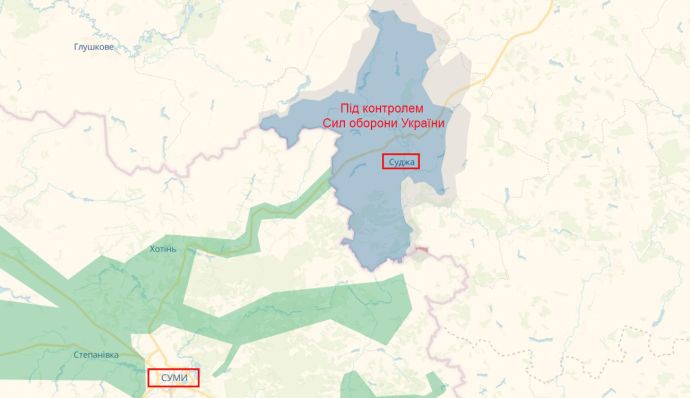
Let’s analyze recent events: strikes on the logistical infrastructure of the Russian army directly on Russian territory. Let me remind you of HUR drone attacks on the warehouses of the Russian Armed Forces’ Main Missile and Artillery Directorate in the Bryansk region. These warehouses were used as transit hubs to supply ammunition both to the Russian grouping in the Kursk region and to Russian forces in Ukraine. These strikes significantly weakened the logistical capabilities of Russian troops in the Kursk region.
Additionally, Ukrainian UAV strikes targeted oil refineries and fuel storage facilities, as well as command and control posts of Russian troops. This included strikes on the command post of the 810th Marine Brigade (Russian occupiers confirmed losses at the level of the brigade commander plus eight senior officers). There were also strikes on the command post of the 76th Airborne Division. These comprehensive measures by the Defense Forces and Ukrainian intelligence effectively crippled the logistical support of Russian troops in the Kursk region and created chaos in the command structure.
Strikes on command posts serve as a demoralization factor. Therefore, we can say that the Ukrainian counteroffensive was planned in advance. The Russians learned about Ukraine’s military command plans only at the moment of the counteroffensive itself. It was a complete surprise for them—that was the intention.
According to Russian assessments, a key feature of the Ukrainian counteroffensive, besides the element of surprise, was its layered preparation. This included electronic warfare systems, which minimized the effectiveness of Russian FPV drones. All these factors contributed to expanding the Defense Forces’ zone of control. Ukrainian units advanced southwest of Makhnivka (southeast of Sudzha) and north and east of Cherkaska Konopelka along the 38K-028 Sudzha-Oboyan highway, capturing Kolmakov.
According to Russian Z-channels, the Defense Forces of Ukraine have launched an offensive toward the settlements of Fansiivka and Ulanok. Some Russian sources claim that Ukrainian forces have taken control of Cherkaska Konopelka and Ulanok.
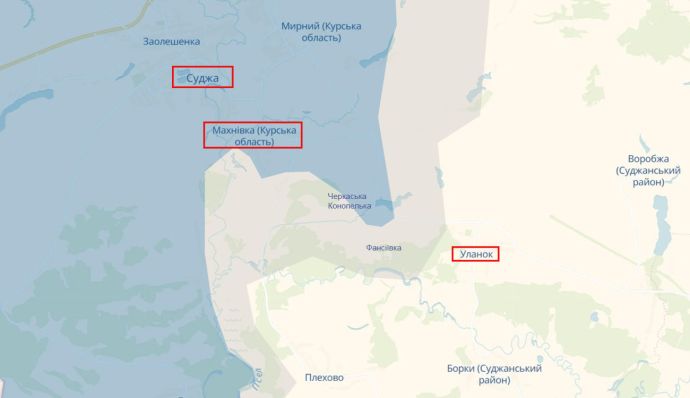
Representatives of Ukraine’s military and political leadership have not yet officially commented on the new Ukrainian counteroffensive in the Kursk region.
However, it is important to note that the AFU counteroffensive has already resolved several key military objectives.
This counteroffensive thwarted a Russian advance in the Kursk region near Mala Loknya. The attack essentially collapsed. Ukrainian troops seized the tactical initiative and carried out a series of successful counterattacks near Makhnivka.
At the same time, the enemy faces the prospect of an expanded Ukrainian presence on Russian territory, potentially extending the Kursk scenario to the Bryansk and Belgorod regions.
This operation forced Russia to divert additional reserves both to the Kursk direction and to reinforce border defenses in the Bryansk and Belgorod regions.
The Ukrainian Armed Forces’ operation in the Kursk region has significantly altered the balance of forces on the front, forcing Russia to withdraw 140,000–150,000 troops from Ukraine.
Currently, up to 50,000 Russian soldiers, including some of the most combat-ready units of the Russian army, are concentrated in the Kursk region. These include the 810th Marine Brigade, which previously operated in the Pokrovsk direction, as well as the 7th, 11th, 76th, 83rd, and 106th Airborne Divisions, redeployed from the Kramatorsk, Siversk, Zaporizhzhia, and Kherson fronts. Additionally, Russian National Guard special forces were transferred from the Vovchansk area in the Kharkiv region.
Discussions persist about a potential breakthrough in the Zaporizhzhia direction or a large-scale airborne operation in the Kherson region. Why hasn’t this happened? Because Russia’s most combat-ready units have been redeployed to the Kursk front.
Due to the redeployment of the 76th Airborne Division from Zaporizhzhia to Kursk, the Defense Forces of Ukraine have achieved tactical success. The so-called “Volunteer Corps” (former Wagner units) and the “Pyatnashka” Brigade—one of the most combat-capable brigades of the so-called “DNR First Army Corps”—have been moved from Kramatorsk.
Thus, the nature of combat operations in the Kursk region has helped stabilize the front in several directions in Ukraine.
The enemy is forced to respond to Ukraine’s advance. The Russian General Staff is still uncertain whether this was the main offensive or a diversionary attack by the Ukrainian Defense Forces. The occupiers do not rule out that the primary strike could be directed at the Bryansk and Belgorod regions. Consequently, they are reallocating operational reserves that were initially meant for frontline operations in Ukraine.
Currently, Russia has been forced to establish two new operational-tactical groups—”Bryansk” and “Belgorod”—with a total strength of up to 90,000 troops. Their task is to secure the border.
In total, Russia has been deprived of 140,000–150,000 troops that could have been deployed in Ukraine. This is a significant indicator.
Another defeat for Russia is that the Kursk operation has shown that its military reserves are depleted, forcing it to seek support from North Korean forces.
Even the first Ukrainian counteroffensive six months ago achieved multiple goals simultaneously.
First, besides personnel losses, Moscow was forced to spend significant funds on fortifying its borders. After the AFU operation in the Kursk region began, Russia allocated a record $200 million from federal and local budgets for defensive structures in the Bryansk region. A similar situation is observed in the Belgorod region.
Second, Russia has spent over 3 billion rubles on social support for so-called “forced migrants.” The term “forced migrant” has entered Russian official language, with 120,000 individuals affected. This has significantly impacted public trust in local and central authorities, influencing public opinion regarding support for Putin’s actions.
Thus, the offensive of the Ukrainian Armed Forces in the Kursk region forced Russia to look for new ways to protect its territories, while weakening its positions on the line of combat contact in Ukraine. This has become an important element of strategic planning, which allows the Defense Forces to stabilize the situation and force the Russian Federation to spend resources.
It is impossible to talk about a successful offensive of Russian troops in the Kursk region. The Defense Forces are successfully using the captured engineering and fortification structures of the occupation forces, and the invaders are forced to admit this. We are talking about two echeloned lines of defense, for the construction of which about 200 million dollars were spent from the Russian budget. The presence of these prepared engineering structures actually nullifies all efforts of the Russian side to displace the units of the Ukrainian Defense Forces from the Kursk region.
In addition, the Ukrainian military is conducting maneuvering combat operations – both offensive and defensive.
Plus, the landscape should be taken into account. The Kursk region is forested. Accordingly, the activities of Ukrainian reconnaissance and sabotage groups reduce to nothing the capabilities of the Russian army, the implementation of their logistical components to support the material and technical support of their units.
The offensive of the Ukrainian Defense Forces in the Kursk region has both a military and a political goal.
The political component is that the war has returned to the territory of Russia, from where it came. And this breaks the paradigm of the so-called “SVO”. During the last live broadcast, Putin, answering a question from a resident of the Kursk region about when the Ukrainian Defense Forces will be forced out of the Kursk region, said that he did not know.
An article recently appeared in Bloomberg that the Ukrainian Defense Forces will be forced to leave the Kursk region. We can assume that one of the whims of the Russian Federation was voiced. Or the conditions of the so-called peace negotiations. And here the exact opposite is happening: the Ukrainian troops are counterattacking and have significant tactical successes.
The Kursk operation significantly strengthens Ukraine’s position during possible peace negotiations. That is, the American side understands perfectly well that the presence of the Ukrainian Defense Forces in the Kursk region actually puts an end to the Russian plan to end the war through territorial concessions from Ukraine.
The Defense Forces currently control about 482 square kilometers, another 157 square kilometers are the “gray zone”, mainly in the Sudzhansky district. Even the current SDU control zone in the Kursk region allows Ukraine to nullify the nature of Russian rhetoric regarding its “special military operation”. The war has been transferred to the territory of the occupying country. And this is already a personal defeat for Putin – informational, political and military. And I am more than sure that the US political establishment understands perfectly well: the presence of Ukrainian troops in the Kursk region is precisely the factor that will allow Ukraine to talk to the Russian Federation on equal terms.
Note that Trump’s proposals for the so-called 1,300-kilometer demarcation line include 100 kilometers of Russian territory, namely the territory of the Kursk region.
Now there are already reports in the Russian and foreign press that the Russian Federation is allegedly ready for so-called territorial exchanges. Obviously, we are talking about the possibility of exchanging the Kursk region territories controlled by the Defense Forces for the occupied territories of Ukraine. I will note that this is a colossal change in the rhetoric of the military and political leadership of the aggressor country, which previously, in Putin’s words, generally denied the possibility of such a scenario.
In summary, I will note that the Kursk bridgehead is an important trump card for Ukraine in possible negotiations to end the war. The presence of Ukrainian troops on enemy territory puts an end to Russia’s “wants” to dictate its own terms for ending the war.
Military and political analyst Dmytro Sniehyrov.
